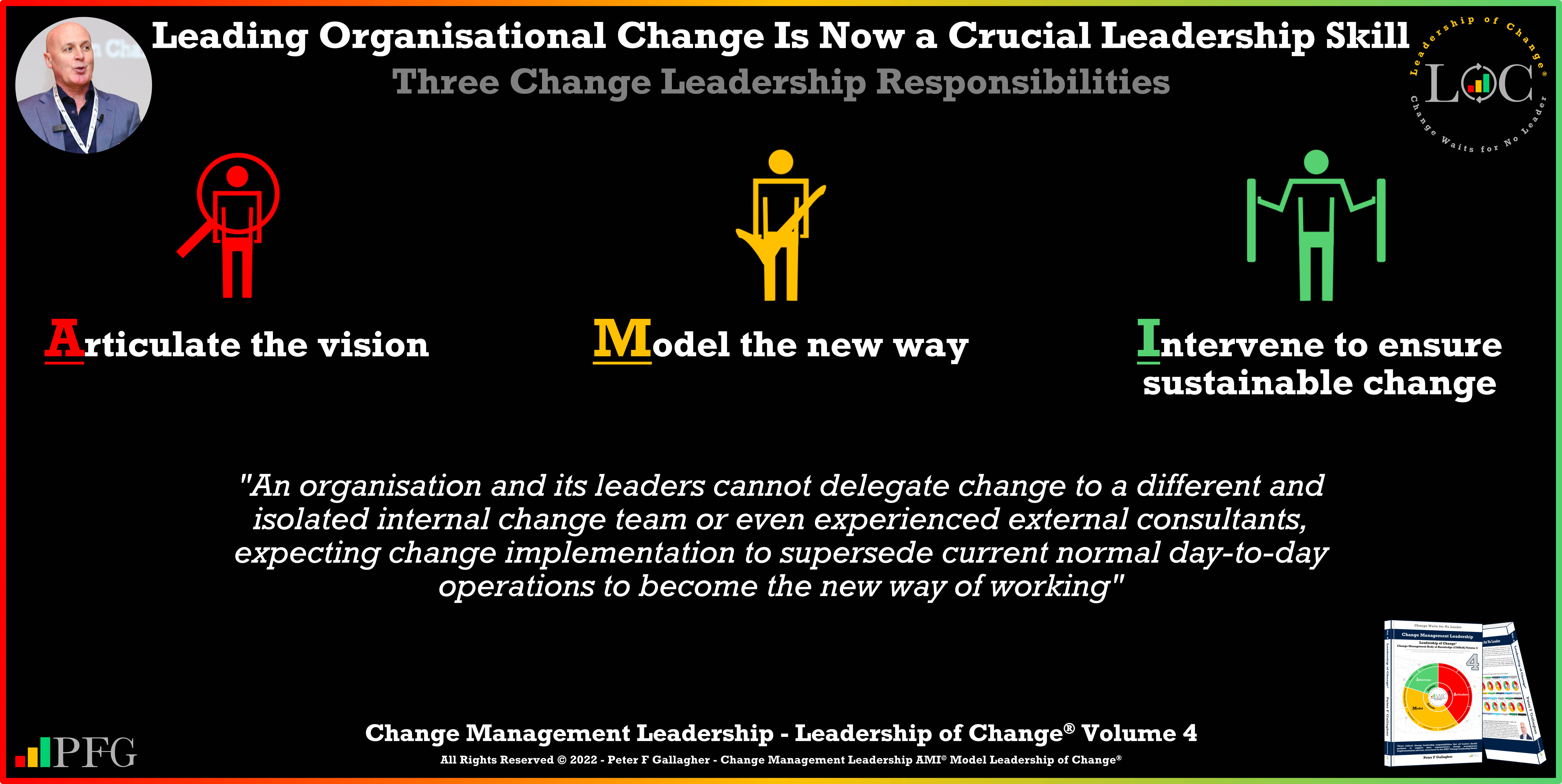Sep06

“Organisational change leadership is about effectively and proactively articulating the vision, modelling the new way and intervening to ensure sustainable change. These are crucial leadership skills”
Covid, the great resignation, the desire for hybrid working and quiet quitting have made us all aware of the importance of organisational change management. Add in the digital nomad, and it is clear we now live in an era which I refer to as the ‘Age of The Employee’, where employees want to feel included, valued, engaged and have a sense of purpose in their work. To navigate this era, leaders of organisations will need to have leadership of change knowledge and skills.
An organisation and its leaders cannot delegate change to a different and isolated internal change team or even experienced external consultants, expecting change implementation to supersede current normal day-to-day operations to become the new way of working. How can the new way of working be adopted by the employees, provide the return on investment, improve operational performance, create the organisation’s future revenue, and deliver competitive advantage without effective and proactive leadership involvement? Worse still, with continued leadership focus on normal day-to-day operations, the change team will not get quality resources or organisation agenda time, which are inherent parts of successful organisational change implementation. There are three critical leadership of change responsibilities:
Articulate the Change Vision: The first responsibility of change leadership is about creating and ‘Articulating the change vision’. This vision should succinctly describe how the organisation, product or service will look after the change is successfully implemented. It should be bold but realistic, it should paint a vivid picture of the future state that appeals to the employee’s hearts and minds, especially their purpose.
Model the New Way: The second responsibility for the leadership team in implementing their organisation’s change is to ‘Modelthe new way’. This is about making the leader’s change vision a reality by modelling the new way of working. The organisation and employees will adopt change when leaders show and model the new way.
Intervene to Ensure Sustainable Change: The final responsibility for the leadership team in fully implementing their organisation’s change is ‘Intervene to ensure sustainable change’. Now that the leader’s change vision has been implemented, this is about making it sustainable and normal day-to-day operations. Without intervention from leaders, the change will not be adopted or sustained.
Blog Source: https://www.peterfgallagher.com/single-post/leading-organisation-change-is-now-a-crucial-leadership-skill
Peter consults, speaks, and writes on the Leadership of Change®. For further reading please visit our websites: https://www.a2b.consulting https://www.peterfgallagher.com Amazon.com: Peter F Gallagher: Books, Biography, Blog, Audiobooks, Kindle
Leadership of Change® Body of Knowledge Volumes: Change Management Body of Knowledge (CMBoK) Books: Volumes 1, 2, 3, 4, 5, 6, 7, A, B, & C available on both Amazon and Google Play:
~ Leadership of Change® Volume 1 - Change Management Fables
~ Leadership of Change® Volume 2 - Change Management Pocket Guide
~ Leadership of Change® Volume 3 - Change Management Handbook
~ Leadership of Change® Volume 4 - Change Management Leadership
~ Leadership of Change® Volume 5 - Change Management Adoption
~ Leadership of Change® Volume 6 - Change Management Behaviour
~ Leadership of Change® Volume 7 - Change Management Sponsorship
~ Leadership of Change® Volume A - Change Management Gamification - Leadership
~ Leadership of Change® Volume B - Change Management Gamification - Adoption
Coming soon:
~ Leadership of Change® Volume C - Change Management Gamification - Behaviour
~ Leadership of Change® Volume D - Change Management Gamification - Sponsorship
~ Leadership of Change® Volume E - Change Management Gamification - Leadership Teams
Keywords: Business Strategy, Change Management, Leadership
 The best is in the middle: why the C-suite must be the top bun
The best is in the middle: why the C-suite must be the top bun The Philosophical Schism in AI: Language, Causality, and the Divide Between LLMs and World Models
The Philosophical Schism in AI: Language, Causality, and the Divide Between LLMs and World Models The Hidden Cyber War on Wheels: Why Electric Vehicles Have Become a National Security Concern
The Hidden Cyber War on Wheels: Why Electric Vehicles Have Become a National Security Concern The Evolution of Artificial Intelligence: From Text Generation to Transparent Agentic Reasoning
The Evolution of Artificial Intelligence: From Text Generation to Transparent Agentic Reasoning In Order to Develop Your Future Leaders — You Need to Let Go
In Order to Develop Your Future Leaders — You Need to Let Go